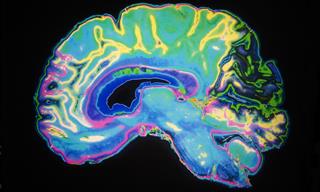Emerging evidence shows that your brain and even household chemicals can play a major role in weight gain. A slice of chocolate cake, for instance, is irresistible even to the most conscientious eater. Yet it's baffling why we sometimes give in to temptation despite our better judgment. In order to discover why, researchers at the Montreal Neurological Institute and Hospital (MNIH) have found a possible explanation.
They discovered that the second we see delicious-looking food, a hormone in our gut called gherlin starts sending powerful signals to the brain that tell us to eat that cake now. As researchers continue to uncover the cause of excess weight, and the sooner we unearth what causes us to gain weight and hold on to it, the sooner we can find a cure for obesity. Let's take a look at how the latest weight-loss science is making it easier.
1. Rethink what’s delicious
Using MRI (Magnetic Resonance Imaging), researchers studying the gut hormone ghrelin found that it increases the neural response and as a result, appetite in the regions of the brain responsible for coding the incentive values of food. So, when we see food we like, we are exceedingly compelled to eat it. To top it off, our brains are most probably wired to value high-calorie foods, which in essence, is an important factor when food is scarce or difficult to obtain. Can you counter this? One way to do so is to increase the appeal of low-calorie foods by thinking about them more positively.
2. Get your thyroid checked—again
According to a study in March 2008, small dips in thyroid function are associated with weight gain. When this gland, located in the neck, does not secrete enough hormones it can result in lower metabolic rates, including symptoms of fatigue and weight gain.
In addition, Caroline Fox, MD, an endocrinologist at National Heart, Lung and Blood Institute says her research group was surprised to discover that women whose serum thyrotropin (TSH) levels were relatively high, but still within the normal range used by doctors to diagnose thyroid conditions, still gained up to four pounds over three and a half years compared to women whose TSH did not increase. Fox says, "if a patient feels she has gained excess weight or has trouble losing weight despite adherence to a healthy lifestyle, she should talk to her physician.
3. Avoid bisphenol A and other household chemicals

Research shows that exposure to endocrine-disrupting chemicals (EDCs) at an early stage in life can increase the risk of certain cancers. Be on the lookout for chemicals like bisphenol A (BPA), which can be added to the list of harmful chemicals too. In addition to this, a team at Tufts University has discovered yet another reason to avoid prenatal or perinatal exposure to BPA: It may cause weight gain later in life.
According to Retha Newbold of the National Institute of Environmental Health Sciences, the findings in animals may also be true for humans. In fact, she states: "when a fetus or baby is exposed to endocrine-disrupting chemicals, the body's set point (the balance between energy in, as calories, and energy burned) is irreversibly altered. But EDC exposure is not the only risk factor for obesity. Diet and exercise are major players too.
Also, exposure early in life does not guarantee weight troubles later. Still, "it can help explain why some people have more difficulty losing weight and keeping it off than others." Newbold says. For now, it's recommended that you avoid EDCs where possible, including phthalates, which are found in some cosmetics and cleaning products, and BPA. Furthermore, it is best that you opt for fresh foods over canned, as many canned foods have a lining that contains BPA and avoid polycarbonate water bottles, as well as not heating foods in plastic containers.
4. Don’t worry about an ample bottom; belly fat is the real problem

Research published in the journal Cell Metabolism states that subcutaneous fat, which is found around the hips and bottom, may actually provide some protection again type 2 diabetes. C. Ronald Kahn, MD, a researcher from Joslin Diabetes Center in Boston says that "subcutaneous fat appears to make a substance that is secreted into the blood and improves insulin sensitivity and metabolism."
On the other hand, according to University of Western Ontario professor Kaiping Yang, when it comes to belly fat, the kind of fat cells found in the abdomen produce a hormone, neuropeptide Y, which acts as an appetite stimulant. Moreover, the hormone stimulates further fat cell production. This research, published in the FASEB Journal, suggests that women who carry weight around their belly may find it harder to lose overall body fat.
In addition, it's tough to spot-reduce belly fat with exercise says certified fitness consultant Scott Tousignant. What he suggests as the best approach to slim down all over is to combine aerobic and resistance exercise. As when resistance exercises are done properly, they should elevate your heart rate.
 Go to BabaMail
Go to BabaMail

























































